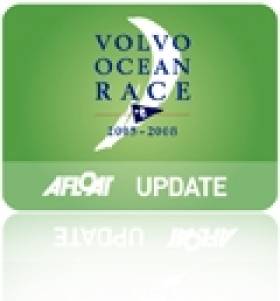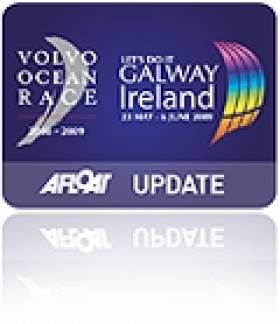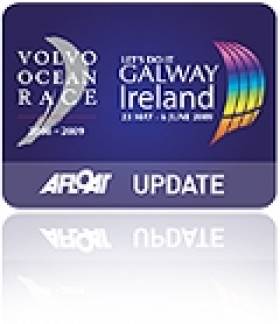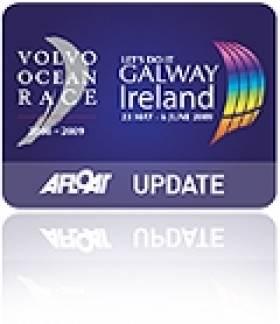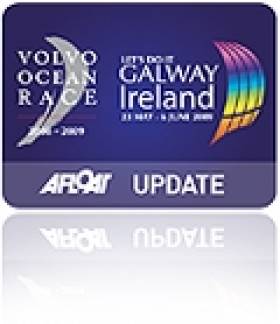Displaying items by tag: Sanderson
New Year, New Rigging for Team Sanya
#VOLVOOCEANRACE – A pre-Christmas rig failure on board the Discover Ireland backed entry 'Team Sanya' in the Volvo Ocean Race continues to thwart the Chinese-Irish sailing team. The crew are hopeful now of fitting new rigging to the 70-foot ocean racer today at their emergency stop port of Madagascar. The yacht has yet to complete any of the legs of the race that started in November from Alicante, Spain.
Former race winner Mike Sanderson, Skipper and CEO of Team Sanya, issued an update on New Year's Eve stating that Team Sanya is now aiming to 'resume racing as soon as the new rigging is in place' and they hope to complete the first part of Leg Two of the 2011-12 Volvo Ocean Race.
The team suffered from a rigging failure on 19th December when they were leading the fleet during Leg Two and had to suspend racing and make an emergency stop in Fort Dauphin, a port in the South East of Madagascar.
Since then the team have been working flat out to make the necessary repairs as, due to the state-of-the art rigging used by the team, the whole side rigging system has had to be changed and the replacement rigging has now been created by Future Fibres. This rigging equipment left with shore team members from Valencia on 30th December and is due to arrive into Fort Dauphin today for the final preparation and curing process to begin.
The sailing team will gather in Fort Dauphin over the next few days and, along with the shore crew, they will step the re-built rig, tune and then sea-trial, with the aim of being able to resume racing on or around the 6thJanuary. The team is aiming to complete the first section of Leg Two that will take them to the safe haven port. By completing this part of Leg Two they are then entitled, under the Notice of Race rules, to claim average points for the second short stage of Leg Two, the InPort race in Abu Dhabi and the first stage of Leg Three.
Team Sanya is then forced by race rules to await for the fleet to return to the safe haven port during Leg Three and will then re-join the race into their home part of Sanya.
Mike Sanderson, commented on this latest decision:
"The rigging failure was a massive disappointment to us as a team. We were having a great leg and felt that we were showing for the first time what this team has the potential to deliver given an opportunity opening up for us. It has taken quite some time to come to terms with this second blow to our campaign but that's all part of what can happen during a Volvo Ocean Race and we are more determined than ever to get racing again.
We have spent considerable time assessing the options and weighing up what might be seen as a relatively short term gain of completing this leg against the need to ensure the boat and team are 100% ready and race fit for Leg Three and onwards. After discussion with our key sponsors, we made the decision to do everything we can to complete this part of Leg Two and maximize the points we can gain which could be of value to us later in the race. We are still very dependent on everything going right with the application of the new rigging down in Madagascar but very hopeful that we can resume racing as soon as possible"
Rig Damage Forces Chinese-Irish Yacht Sanya Ashore
#VOLVOOCEANRACE – Team Sanya is heading for shore again, the second time in as many legs. This time the Discover Ireland backed yacht in the Volvo Ocean Race has suffered rigging damage.
The 70-foot Chinese-Irish entry reported into race headquarters early this morning that they had suffered damage during the night to part of their rigging (D2 intermediate shroud) and are having to head to a port in Southern Madagascar in order to assess the damage and make a repair plan. All the team are safe and well, no one has been injured and the race boat is fully under control with the mast still upright and the boat still able to sail to shore.
Mike Sanderson, CEO and Skipper of Team Sanya, advised on the situation and background to the incident:
"We were just out of the major breeze and changing sails from the J4 to the fractional zero and were in wind speeds of around 12-14 knots when we noticed a vital piece of rigging loose from the mast (D2 shroud). We had just been through an awesome night's racing and were totally hauling and making massive gains so we were very upbeat about our progress. The weather was turning for the better and so we were happy in our decisions and general progress. We had been due to tack an hour earlier in the darkness but had delayed that given the conditions and for sure, if we had done that, the rig would have fallen over the side. As you can imagine we are totally gutted and can't quite believe this has happened when everything was going so well."
The team had now got the boat tidied up and they have secured the rig in a safe manner as they make their way towards a port in Southern Madagascar. The shore team and Volvo Ocean Race officials are assessing the port options and are in constant contact with the team on the boat.
Dublin to Hamble in 24 Hours - Team Sanya's Video
One minute it's trips round the bay with Miss World, canapés at the Royal Irish Yacht Club and corporate hobnobbing in Dun Laoghaire. The next it's a wet and windy ride from Dublin to Hamble in 24 hours. It's the lot of the modern Volvo Ocean Race crew (helmets compulsory). Chinese-Irish race entry Team Sanya boss Mike Sanderson (a previous race winner) has called his exit from Dublin 'heinous'. Don't take our word for it tho, check his vid below:
SB3 Team Sanya Welcome Scuppered by Strong Winds
Plans for an SB3 flotilla to escort Volvo Ocean Race Chinese entry, Team Sanya in to Dun Laoghaire harbour today were scuppered when winds reached gale force for a time this afternoon.
Regular Dun Laoghaire fleet Sunday racing was to feature the Sanya arrival at 4.30pm but the SB3 club race was cancelled following squalls and torrential rain that also drew a halt to the Star European championship on Dublin Bay.
The Mike Sanderson skippered yacht is berthed alongside the Royal Irish Yacht Club. Team Sanya is a refurbished version of the Telefónica Blue boat from the 2009 race.
The yacht will be engaged with promotional work on Dublin Bay tomorrow with sponsor Discover Ireland.
Rosanna Davison Goes Back to Her Roots Sailing with Team Sanya
Skipper and past race winner Mike Sanderson and his crew - including Galway's Frankie Leonard - will receive a special send-off from Rosanna who won her Miss World title in the Chinese city of Sanya in 2003.
Team Sanya is the Chinese entry in the 2011-12 Volvo Ocean Race, a 40,000-mile round the world race that will finish in Galway on the 3rd July 2012. A special relationship developed between Ireland and China during the last race through the Green Dragon entry, say backers Discover Ireland, the tourism body.
Rosanna will board the yacht at 11.00am at the Royal Irish Yacht Club and will sail with the team into Dublin Port. The Eastlink bridge will lift at 1.00pm, and Team Sanya will dock beside the Cill Airne at 2.00pm. Rosanna will be on the Cill Airne from 5.30-7.00
As part of the team's promotion and it's Irish link through the Discover Ireland.com brand, the race boat and crew will call into Dun Laoghaire on Sunday, 4th September, at 5pm as previously reported on Afloat.ie.
They will overnight in Dublin and sail up the Liffey on Monday at 1pm and dock beside the MV Cill Airne on North Wall Quay, Dublin 1. A reception will be held on the MV Cill Airne from 5-7pm.
At 7pm the Team will head back out into the open sea as they start their journey to Alicante for the race start on the 5th November.
The Volvo Ocean Race is regarded as sailing's premier global race and one of the most demanding team sports in the world. The 2011-2012 Volvo Ocean Race route is: departing on 5th November from Alicante to Cape Town (South Africa) Abu Dhabi (UAE) Sanya (China) Auckland (New Zealand) Itajai (Brazil) Miami (USA) Lisbon (Portugal) Lorient (Framce) and finally Galway on the 3rd July 2012.
Mike Sanderson, skipper and CEO of Team Sanya commented on the forthcoming trip: "Our relationship with Ireland is really important to us. Frankie Leonard from Galway is our media crew member and he is going to be paramount in telling our story as we race around the world, building the profile of Ireland as the stunning tourist destination that it is. For many of our team, it is our first time visiting Ireland so we were really happy to include a pitstop in Dublin during one of our training trips."
Frankie Leonard, Team Sanya race team and the Irish Media Crew Member, added: "As the only Irishman on board I'm very proud to be part of this exciting event with Team Sanya and really looking forward to sailing into Dublin next week. My home town is Galway and finishing there in July 2012 is going to be a very special moment but this stop-over is a perfect way to help build a strong following and fan base in Ireland to develop Ireland's profile as we travel to nine other ports around the world."
Sanderson Unveils 'Discoverireland' on Team Sanya
Team Sanya are working in close partnership with 'Lets Do It Global', organisers of the Volvo Ocean Race Finish in Galway, under the 'discoverireland. com' brand.
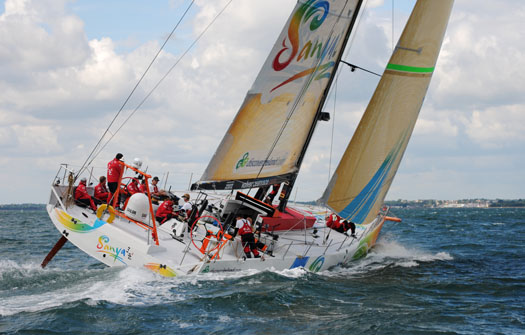
Team Sanya afloat in Irish colours. Photo: Tim Stonton
This is the second time China and Ireland have partnered with China to enter a boat into the Volvo Ocean Race. The first was with the Green Dragon Team in 2008-2009. Sanya, is situated in the southern most city in China and is a popular tourist destination. It is also where Rosanna Davidson won her Miss World title in 2003.
The chairman of Let's Do It Global Enda O'Coineen said ''this partnership with China and Ireland for Team Sanya is a dynamic collaboration of all Irish interests. Led by tourism, it will leverage the extraordinary opportunity the Volvo Ocean Race coming to Ireland presents. Having such a professional team and a skipper with the calibre of Mike Sanderson, twice winner of the Volvo Ocean Race and a Media Crew Member, Galway man Frankie Leonard on board we are assured of a very exciting race, culminating in the final in Galway on the 3rd July 2012. As final destination, Galway will host the largest festival in the country.
This is a major opportunity for the tourism sector and all Irish based businesses. We have developed "Global Village 2012" with four pillars, Food, Innovation, Green and Marine, as a platform to showcase to a global audience all that is good about doing business in Ireland."
The Volvo Ocean Rcae is regarded as sailing's premier global race and one of the most demanding team sports in the world. The race will begin on 29 October in Alicante, Spain and will finish in Galway early July 2012. is the stopover ports include Cape Town, Abu Dhabi, Auckland, Itajai in Brazil, Miami, Lisbon, and Lorient.



























